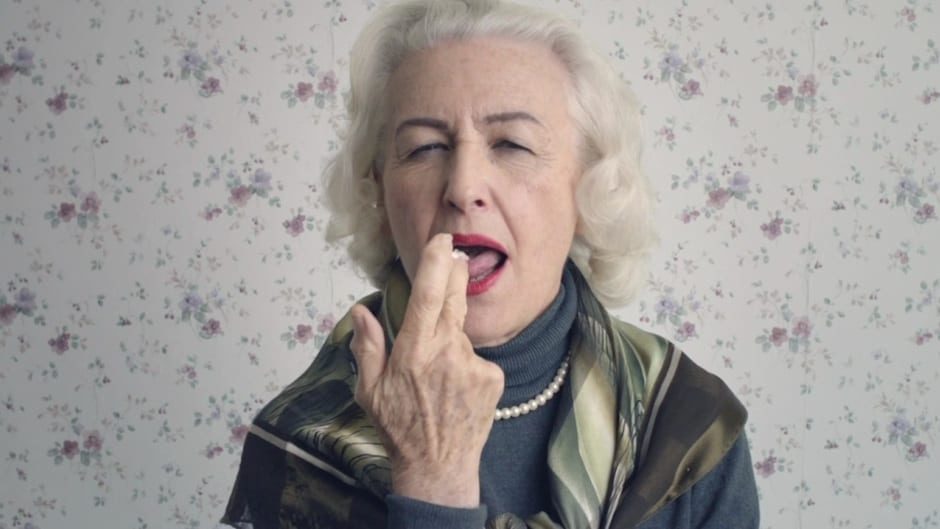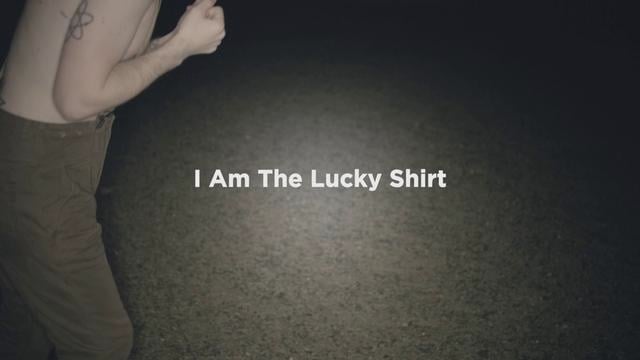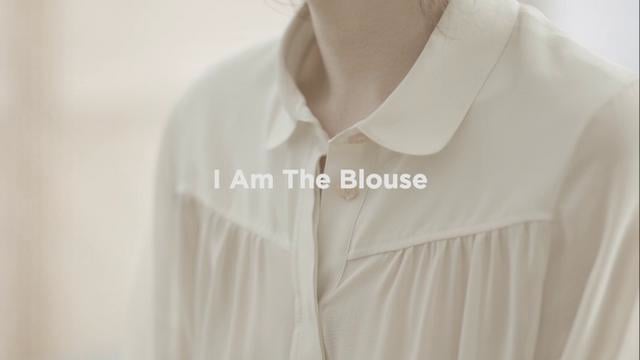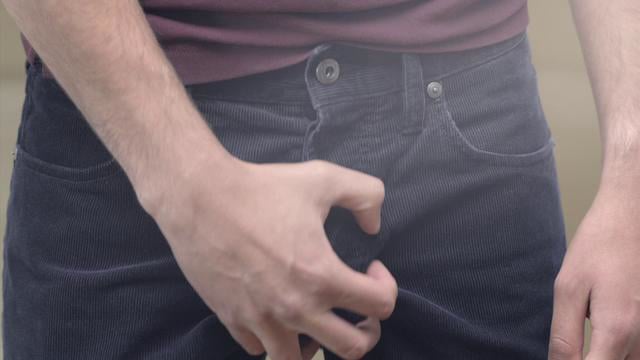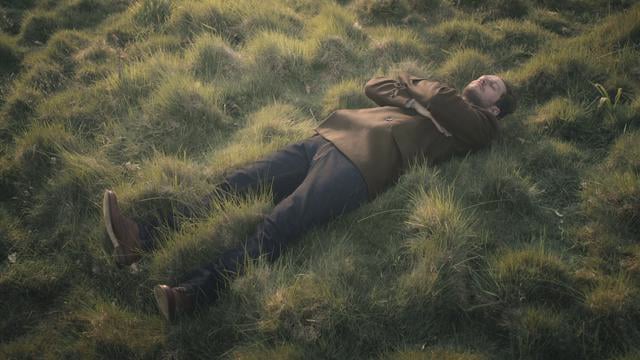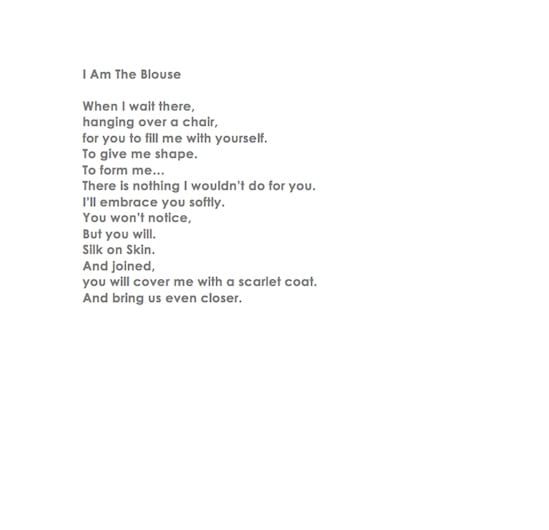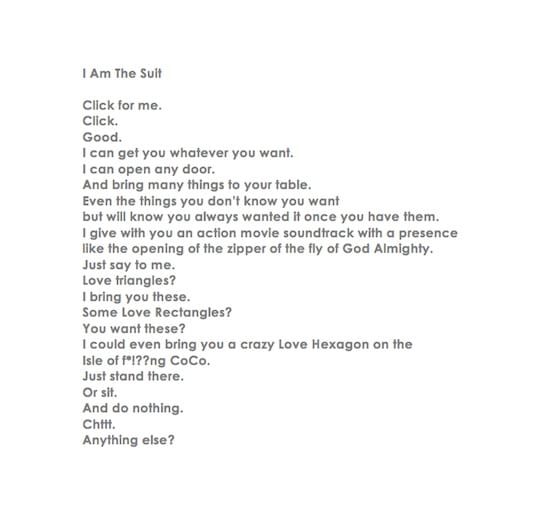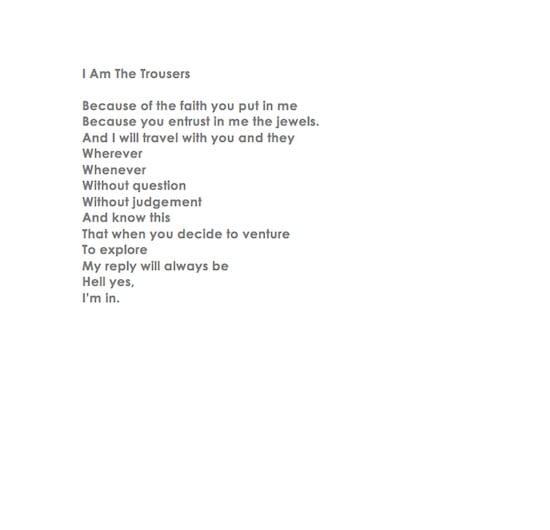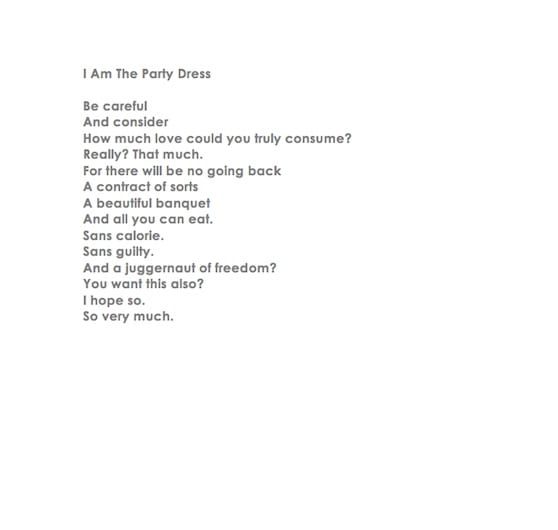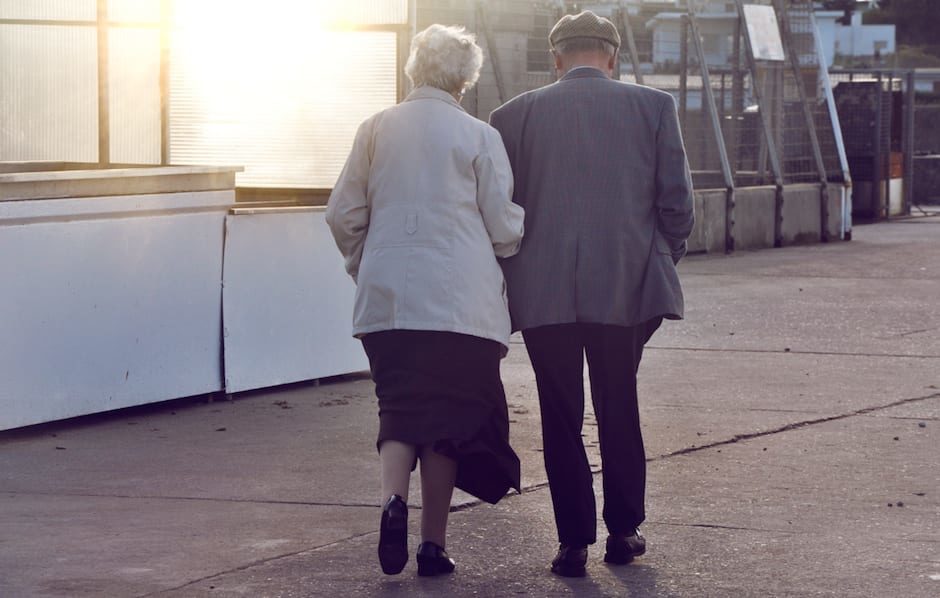Remember the first time you saw Sony Bravia Balls or Cadbury’s Gorilla commercials? There’s something about Richard Flintham’s creative work that resonates immediately with freshness and originality. Lyndy Stout talks with the man who takes advertising to a new place you’ve never been before.
There are so many narratives going on in this French Connection campaign, some of which are subliminal – like the flashes of the Yes No book, and the panda. What’s a panda doing there, you wonder, and then you get to the panda punch and everything connects .
What’s a panda punch?
When he gets a black eye at the end and looks like a panda.
Oh no, we’d never thought of that. That wasn’t anything to do with it.
There are lots of reasons . . .
Perhaps we should start at the beginning. How did the campaign evolve?
We’d done two or three seasons of ‘The Man’ and ‘The Woman’ campaign in a previous life – at Fallon – and we wanted to break away from this construct . . . not make them so involved in the idea. The clothes were getting better and better, and it didn’t feel like the most stupid thing in the world to say, ‘What’s a suit or a party dress or a silk blouse really supposed to do for you?’
I imagined a piece of silk is designed to make you feel something – make you feel like you can do something – so we thought that was a really good place to start.
If you’re selling a car you want to try and tell people what they are going to experience with that car in proper old advertising logic, so it didn’t feel like madness.
So the campaign evolved from the clothes’ point of view?
It was actually like these little super powers that you are given by each item. I know what I want from a suit; I want to walk into a bar and for a brief moment, although I’m happily married, I want to go, ‘Yeah, just for a little bit look at me,’ and then I’d like to say, ‘No thank you.’
We started off with the idea that this is going to be about the clothes speaking;
we wrote an awful lot of dialogue from the clothes and that felt right. There’s lots of over-poetic stuff that we’d written, but it was a good starting point.
Were these poems used as part of the campaign?
Poems? No, verses! Don’t call them poems . . . they’re meant to be attitudey bits, personality pieces, there’s nothing fancy about them.
This is what we started off with as guidelines. Rather than I am The Man, it was I am The Suit or The Blouse – and how would a blouse speak to you? So we’d write a little speech. It sounds a little bit silly, but the early conversations were: ‘I imagine this suit to be a sort of dodgy Colombian fixer who can get you anything that you want.’ The blouse was very much about the love affair between silk and skin, and how the blouse aches for that moment of connection. The Lucky shirt was ‘lucky stuff happens when you put me on’, and it just went on and on. But there’s a point which is really nice, when you start to realise some of the ideas will work really well, while others feel like they want to be more free, and then it finds its own level.
So the distant voices and floating sentences in the spots?
They’re the spirit of what you want from the suit. It’s become less important to us that you understand that those voices might be the suit speaking; the idea of a speaking suit is pretty stupid anyway, so it’s not important. It’s more ‘I want to feel that I can do stuff in my suit…’
How involved is the client in the creativity?
What’s nice is that the relationship we have with Stephen [Marks, chairman & CEO] and Will [Woodhams, director of marketing & PR], and even the designers and lots of other people at French Connection, means that we can talk a lot earlier and tell them quarter-ideas and show them which way we’re going. We get their input as well. So we end up with quite a lot of freedom to deliver on a tonality rather than a big delivery of the idea.
Everyone is pretty happy to big everything up halfway through, if it means it turns into a better piece – which is lovely. Let’s have some rules . . . we know what we’re doing . . . But then beat them, beat them, beat them, take the voiceover out and just have a music track, or do this, let’s try that…
Previously, we’d started with the work that will take you to the store, but it feels like this campaign is almost written from the shop floor and then connected outwards, rather than the other way around, which has been really nice to do.
And then Stephen or Will would go: ‘This might be quite cool’ or ‘Here’s a good gag’ or ‘Have you seen this girl?’. People can move really quickly without having to have a meeting about it.
So do they just let you do what you want?
No, that’s not true. It’s very nice to think that we could go and do anything, but I do think things get better when you work together. Stephen and Will play a big role in this; their designers and stylists, and their store people who design how the store feels, play a massive role in this.
And if you chat quite a lot, you don’t need to have three monthly big meetings, which is nicer for them and me. It’s more of a continuous chat and flow of ideas, which keeps a momentum going – as opposed to us being employed to deliver a piece of work every six months.
It’s not a love-in; it’s just a load of really nice people wanting to achieve the same good level of work . . . who want to move the work on, rather than just be paid again.
This campaign is made up of eight films instead of one big spot for the season.
Yes, instead of just one or a few pieces that would last the whole season we wanted to have different peaks throughout the season to refresh the idea.
On the outside of the Oxford Street store, there were big white panels with magnetic letters – similar to the ones outside the Prince Charles cinema – saying, ‘I am the Suit . . . Coming Soon’. And then a week later they’d change it to: ‘I am the Blouse . . . Coming Soon’, and so on. The store gets to be very connected to what we’re doing. For instance, they put lottery tickets in a lot of the lucky shirts, so you’d buy it, get it home and find there’s a lottery ticket in there.
The suit has a little card inside it – I can’t remember exactly what it says – but it’s something like: ‘The trembling in your knees, the palpitations behind your breast, this is entirely normal, it is important that you do not mistake these symptoms for love. I am the suit.’
All those little things – the depth and element of surprise – are just nice. It’s our version of ordered excitement.
These films don’t take themselves too seriously – like the trouser one with the crotch scratch scratch. In each one there’s a good smile…
I think that’s something [that] Stephen and Trevor [Beattie] did before us. It felt like they had positioned French Connection slightly outside of fashion and I think Trevor played on, ‘Let’s be cool, but we’re not people who take ourselves too seriously.’ So it’s nice that we can still play like that, too. Like the writing in the earlier campaigns that we did, where the English was wrong, with a mish-mash of Frenchness. It didn’t mean anything in French, it was just the spirit of being French.
You seem to have built up trusted collaborators. Have you worked before with the directors, Damien and Leila de Blinkk?
Yes, I’d worked with Damien and Leila for a long time as directors and photographers; I think we know each other quite well. One of the things I really like about them is that they look at work as projects; it’s not just a one-day ‘Thank you very much, let’s stop at 5’, and we’d have produced only 12 photographs. We do it and we do it right until it’s done.
It’s nice knowing that with Leila and Damien they feel they can come back with, ‘No, we don’t like that, we’re going to change the concept.’ I can talk to them about their shoot with a different DP – all of this stuff which means that over the course of about three or four days we can produce enormous amounts of work.
They take the stills as well?
Yes, it’s an image collection project, really. I think we came back with about 500 images for this latest campaign. It’s great, because we have so much fun doing it. Like, some of the stuff we’ve done before for French Connection we just looked at the contacts and Will or Stephen decided to wallpaper the whole store with the contact sheets. Nothing is wasted, which is really nice.
Did you storyboard everything?
No, but we cut mood films before we shot and we’ve got loads of photographic references of what we were trying to do. We had scenes that we wanted to shoot and then try as hard as possible to not throw in too many other things.
Like the shadow trick?
Yes, that was done on the shoot. That wasn’t storyboarded, it sort of happened. And it was, ‘Let’s lock the camera off and split-screen it just in case it works.’
Any other magic moments?
Almost half were things we didn’t think we’d be doing. Like, we’d got a really cool guy, Michael from a French band, as The Man and it was never our intention to show his face; it was very much the clothes first and the people second.
We decided to work with a director of photography called Marc Gomez del Moral, who had shot a really nice promo for Canada. It was really just go for it shooting. And then it got really dark and we had to pack up and leave, but Marc said, ‘Just let me hang on here with Michael,’ and they ended up strapping a torch to the camera and mucking about with his top off. We knew we wanted to shoot a scene of people running – with some urgency – but they happened to find a dusty field and they came back with that amazing footage.
Because we try and get the most out of the whole thing, Damien would be shooting stills after we’d finished shooting, or sometimes we’d go the other way around and start with stills. Alice [Stein] and Dirk [Van Dooren], the other creatives involved, would be supervising other parts of the shoot. We were in this big house with lots of different rooms and big grounds, so we’d be, ‘Oh I’ve just shot this . . . Oh, that’s weird, I’ve just shot someone jumping into a pool . . . Or, I’ve just thrown a lot of money up in the air.’ And it was astonishing how the machine around the production with the Onesix7 people rolled. You know: ‘Can you get us a wad of money in Italian currency, can you get us a bowl of milk and some ice cream . . .’
[vsw id=”30850812″ source=”vimeo” width=”540″ height=”300″ autoplay=”no”]
It would be great to talk with Leila and Damien.
They’ll laugh about how I brief them, I’m sure. Because they understand how I speak and I don’t have to do much more than ‘Oooh’ and Damien will go ‘OK.’ It’s quite a nice synch going on.
They instinctively get it?
Yes and we can have rows – not very often of course, but everyone can be frustrated sometimes.
Although everyone has worked together for all of the campaigns, pretty much, and everyone knows it’s all aiming towards something good. Sometimes we’ll muck up, but it’s that nice thing of having enough rules to know where you’re going and then to hopefully beat them. And no one is going to kill you if you screw something up because we’re producing so much stuff.
By rules, do you mean the idea is locked down but there’s freedom to explore?
You know what you’re trying to capture for your viewer or reader or for the look in the store, and that’s the idea we are going towards.
The suit film was supposed to have voice all over it until a track appeared and we decided we were not going to put a voice on that anymore, because it had exactly the feeling of what we wanted in the first place.
I think that at least two or three of those spots weren’t written until we were on the shoot. But that doesn’t mean that the client and people you’re working with don’t know what you’re doing, because they’re on the shoot as well. You go, ‘Hang on a sec, that could be quite funny,’ so we’re able to try that.
Stephen and Will are certainly not the type of people who say, ‘Excuse me, you said that you would deliver a shot 22 seconds in of the buttons on their own.’
Everyone knows what we are trying to do and it feels quite free, but I certainly wouldn’t go on a shoot with the collection on its own and say, ‘Hey, let’s just shoot something crazy, guys.’ There’s always got to be a reason.
[vsw id=”30858754″ source=”vimeo” width=”540″ height=”300″ autoplay=”no”]
And the reason for the panda?
Well, the panda is there because that was intended to be a scene which was about ‘I’ll give you anything you want, just tell me’, and it was going to be a spectrum of all sorts of women, all sorts of ages, all sorts of sizes and even a panda if you want it – although we didn’t have to be as literal as that. Suddenly it was decided to put that music on it and the logic strand felt like it could just relax. You know what? I think it’s funny that it’s in there. If people get it, they do. If they don’t, it doesn’t matter because it’s a tone; we’re not really trying to tell a story, we’re trying to present a world.
The use of stock footage is inspired.
If it had been a script about going to Les Vegas, it would have been cheapskate and it would have made the brand look cheap. But here the stock photos are a visual menu of whatever you might want.
Obviously so much happened in the editing. Was that a long process?
The shoot was over four days and the editing was over weeks and weeks and weeks. Ben Campbell from Cut and Run was the editor, and Parv from Wave, who I’ve done lots of things with, was the sound designer. Everyone knew where we were heading from the beginning – they’re not just at the back end of the process – so after the shoot everyone has got a space to go. Ben mucks about with it, Parv mucks about . . . and it feels like everyone does their best. If you have general agreement in where you’re going, it’s so important to let the stuff around you affect what you’re doing; it’s almost arrogant not to.
We thought that we were going to do it with voice, but sound design and music have an awful habit of just coming in and grabbing the limelight. Everyone knows that if their idea is good enough it can replace anything that is currently on the table. Sometimes it’s too free. I think maybe Abi [Hodson, exec producer at Onesix7 Productions] would like it a little more bolted down before we begin to shoot. But I don’t think she really would swap it.
Abi Hodson’s response:
The amount of freedom we had is rare in advertising and obviously comes with its issues, but I definitely wouldn’t swap this way of working, especially given the amazing creative we ended up with. When you put Richard, Leila and Damien together it’s inevitable that the ideas just keep flowing and the process is always very organic. It was definitely an interesting and inspiring journey for all involved.
You can sit in your room all you want to and write everything to the last frame, but if you turn up on a shoot and there are 17 rainbows happening at once, you don’t want to feel like an idiot and say, ‘Well, it doesn’t fit.’ Sometimes you have to deliver a specific thing and you have to control it, but it’s always a good thing to try and leave a gap for something to surprise you and say, ‘God, that’s made it better.’
That’s happened on your previous work like Sony Balls, hasn’t it?
Well, the idea was done for that, it was just delivering it in a different way. But for the Sony Foam City [spot] nobody knew there was going to be a wind storm; everything was going to be kept on the ground. And then all of a sudden a mini tornado blows up. So we used that and it was good.
Years ago at BMP we did VW – a left shoe campaign for the Polo automatic – and the idea was all those shoes you see chucked at the side of the road . . . because it’s an automatic you don’t need your left shoe anymore. So we started photographing whenever we saw a left shoe and then turned it into a poster campaign.
At Fallon, we did Umbro – the goalposts. The best form of art direction on that job was not to go . . . let someone treat it as a project and go all over the country photographing goalposts. But these are old examples and it’s maybe not the right thing for me to be citing previous agencies’ work.
Sometimes it’s nice to have the exercise where you have to execute it brilliantly otherwise it’s going to be crap, and other times it’s really nice to know that you’ve already done the idea and you’ve got to then get out of the way and let someone else have fun doing it.
They’re all different. If you’re photographing a blender, there might be certain things you need to show, so it isn’t the freest shoot in the world. But if you’re trying to make people feel nice about colour, or make people feel that a suit can sort anything out for you, you shouldn’t be sitting thinking, ‘We’re now going to shoot exactly this.’
I’d love to see what you guys would do if you did have a car account.
We’ll see. We’ve already made a cake out of one in our previous agency, for Skoda – or some of us have, anyway.
Were there creative constraints at Fallon?
There weren’t any creative constraints at Fallon – it always felt like our own. But there’s really nothing like having your own thing to make you realise that actually it feels nicer. So I do feel freer, but I didn’t feel particularly constrained at Fallon. We were very lucky.
Any new accounts that you are working on now?
Mr Kipling. So wrong it might be right.
